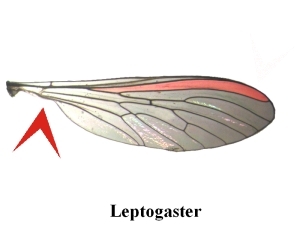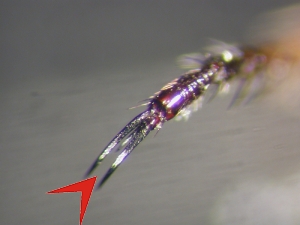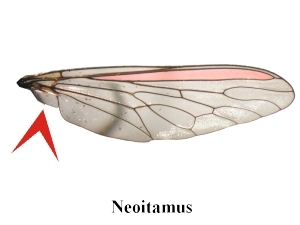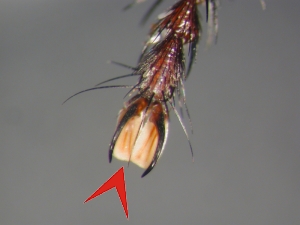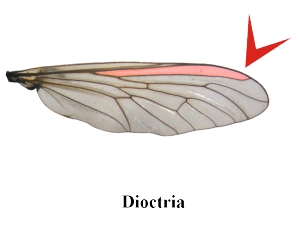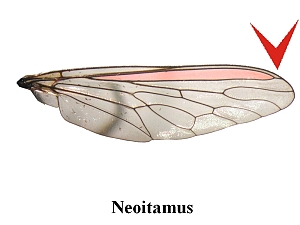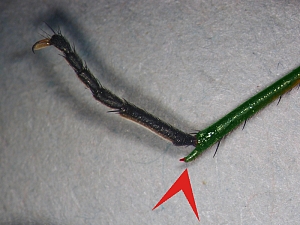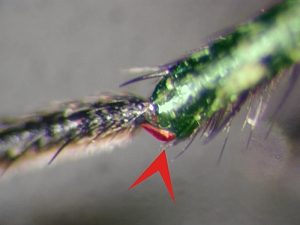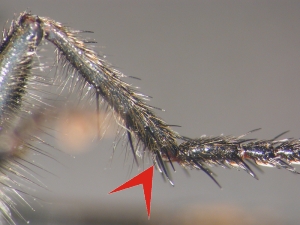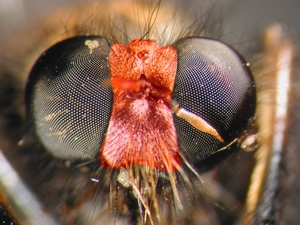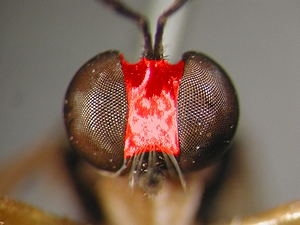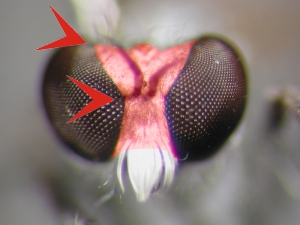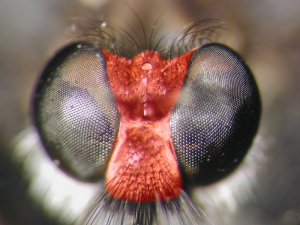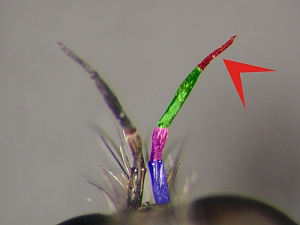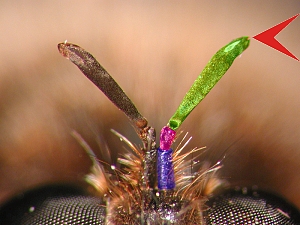g
Start g
- Robber flies of Germany -
[Key] Catalogue Comparisons Notes Terminology
key
Subfamilies
- Leptogastrinae
- Asilinae
- Laphriinae
- Dasypogoninae
- Stichopogoninae
- Stenopogoninae
contents & layout
& copyright:
Fritz Geller-Grimm
Imprint
| 1 a. |
Alula of wing lacking, anal cell reduced [Fig. 1, left arrow]; pulvilli of legs reduced [Fig. 2]; abdominal tergite 2 more than 3 times as long as wide [Fig. 3]; additional characters (also present in some other subfamilies): palpi one-segmented; postpedicel (3rd antennal segment) with a long and narrow arista; marginal cell r1 open; bristles of anepisternum (mesopleuron) lacking . . . . . . . . . . . . |
| 1 b. |
Alula of wing present (*1), anal cell present [Fig. 4, left arrow]; pulvilli present [Fig. 5]; abdominal tergite 2 at most 2 times as long as wide [Fig. 6] . . . . . . . . . . . .
*1) some species of Dioctria have a reduced alula |
| 2 a. |
Marginal cell r1 open, outer margin of cell fused apically with wing margin [Fig. 7 - red marking]
. . . . . . . . . . . .
|
| 2 b. |
Marginal cell r1 closed (and stalked), outer margin of cell separated from wing margin [Fig. 8]
. . . . . . . . . . . .
|
| 3 a. |
Fore tibia with a large spur at tip (Dasypogon, Molobratia [Fig. 9]) - or with a small, bristle-like and sigmoid spur, which is difficult to see (Leptarthrus)
[Fig. 10]
. . . . . . . . . . . .
|
| 3 b. |
Fore tibia without such spurs, but with the usual bristles at tip [Fig. 11]
. . . . . . . . . . . .
|
| 4 a. |
Distance between eyes dorsally not much wider than distance at lower facial margin; margins of eyes at level of antennal sockets rounded; vertex not particularly excavated [Fig. 12], [Fig. 13]
. . . . . . . . . . . .
|
| 4 b. |
Distance between eyes dorsally much wider than distance at lower facial margin; margins of eyes at level of antennal sockets angled, pointed; vertex strongly excavated [Fig. 14], [Fig. 15]
. . . . . . . . . . . .
|
| 5 a. |
Postpedicel (3rd antennal segment, green marked) with an apical arista
[Fig. 16]
. . . . . . . . . . . .
|
| 5 b. |
Postpedicel (3rd antennal segment, green marked) without an apical arista - or with a minute pit and sensillum; bee-like or bumble bee-like appearance [Fig. 15]
. . . . . . . . . . . .
|
